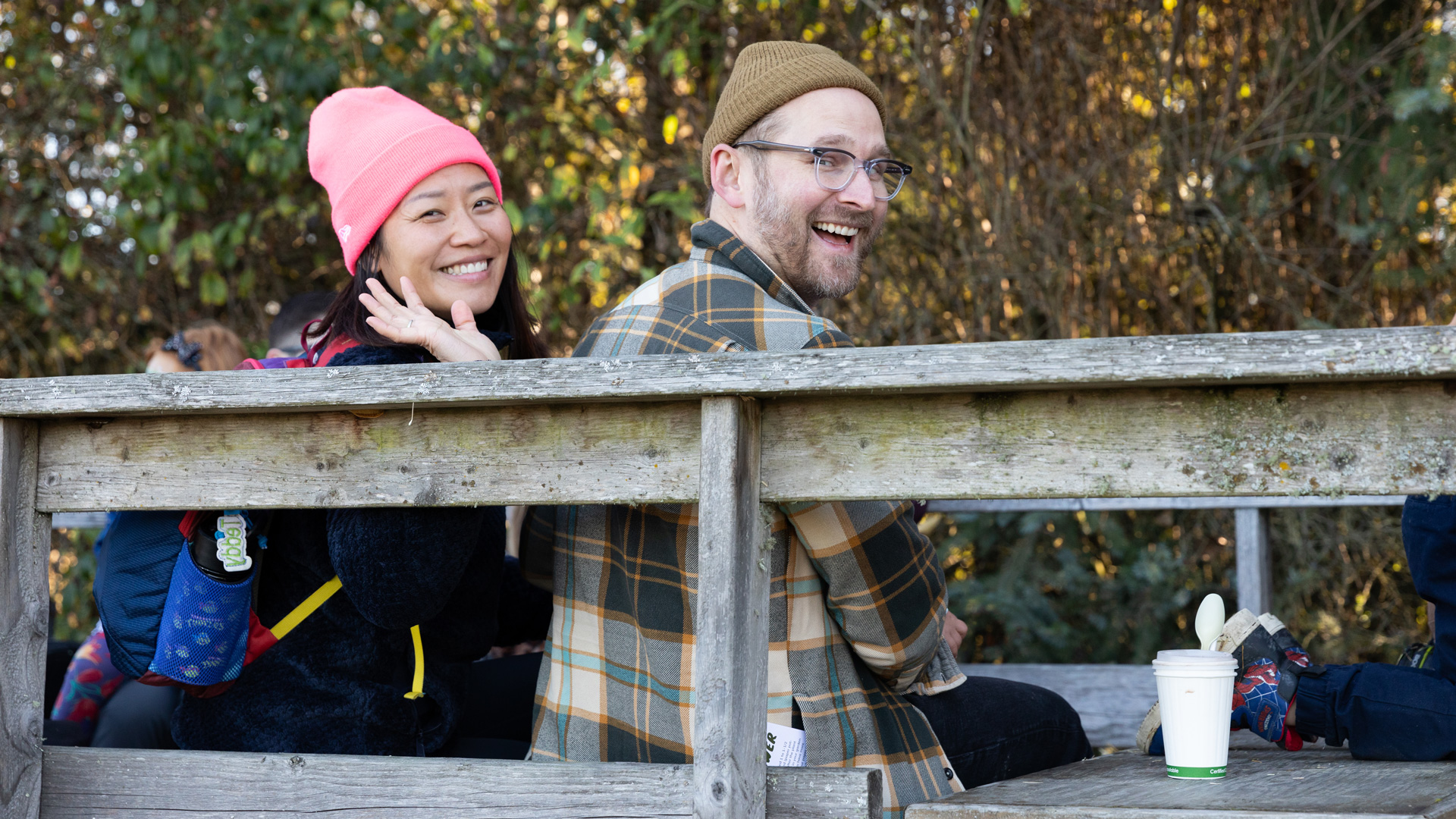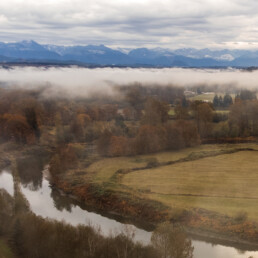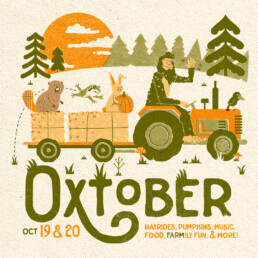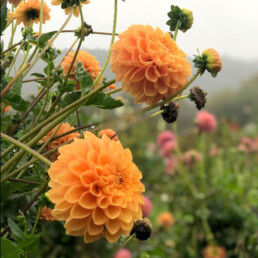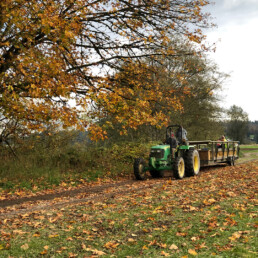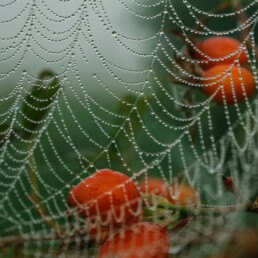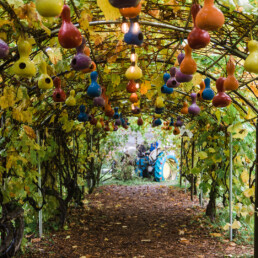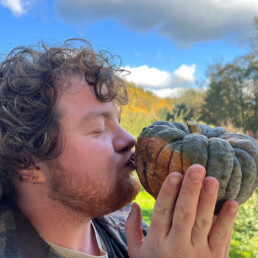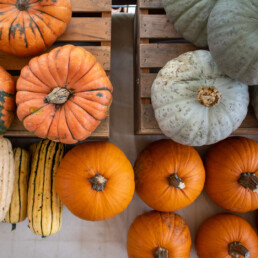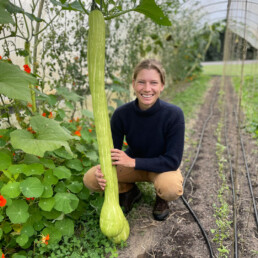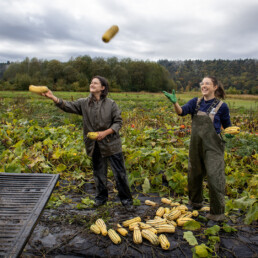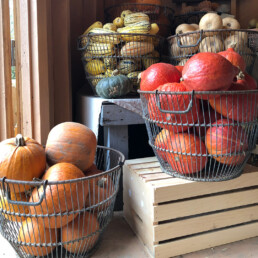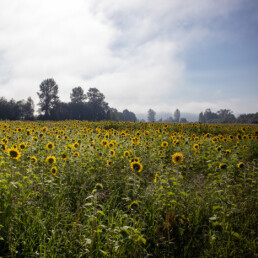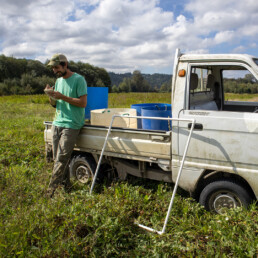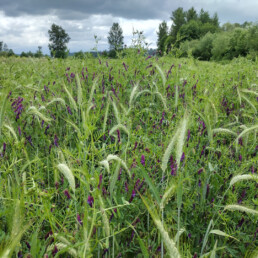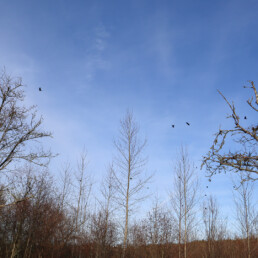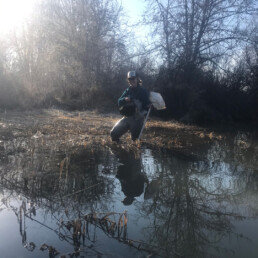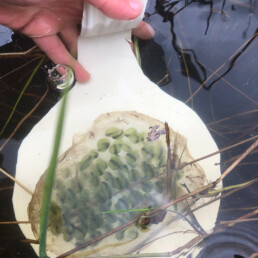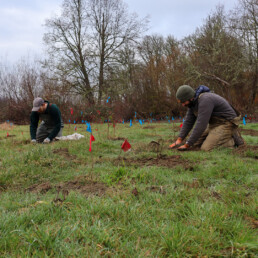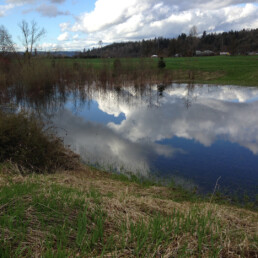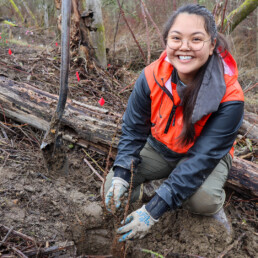5 Reasons to Relish the Season at Oxtober
There’s something magical about autumn in the Snoqualmie Valley—yellow cottonwood trees swaying in the breeze, raindrops sparkling on spiderwebs—and Oxtober is the perfect way to experience it all. This beloved festival brings the best of the season to life in a peaceful, family-friendly setting. Join us for a day of classic fall fun, from hayrides and hot apple cider to picking out the perfect pumpkin. And beyond the expected, Oxtober is an opportunity to connect more closely with nature and witness the incredible work Oxbow is doing to support sustainable agriculture and restore local ecosystem health. Here are five fall experiences at Oxtober that invite you to engage more deeply with your environment and fully celebrate the season.
1. Explore Over 20 Unique Winter Squash Varieties Beyond Pumpkins
While pumpkins may steal the spotlight, Oxtober is your opportunity to discover a remarkable variety of winter squash grown between our production fields and our educational Kids’ Farm. Oxbow has cultivated over 20 unique varieties, each with its own flavor, texture, and beauty. From the sweet and earthy “Autumn Frost”, known for its natural frosty wax bloom, to the deeply ribbed Black Futsu, a Japanese heirloom squash that matures from black to bronze, there’s a squash for every palate and purpose. Other exciting varieties include the delicately sweet Butternut, the nutty Red Kuri, and the festive Carnival, which doubles as both a delicious meal and a beautiful fall decoration.
But that’s not all. Oxbow’s farm isn’t just about providing for festival-goers—three varieties grown from Native Seed SEARCH, along with many others, will be donated to the Chief Seattle Club to support their hot lunch program, providing nutritious, sustainably grown produce to the community. These special varieties—Mayo Kama, Calabasas de las Aguas, and Mayo Blusher—were requested by the club for their cultural significance and have shown surprising resilience in our local conditions, despite their origins in Sonora, Mexico.
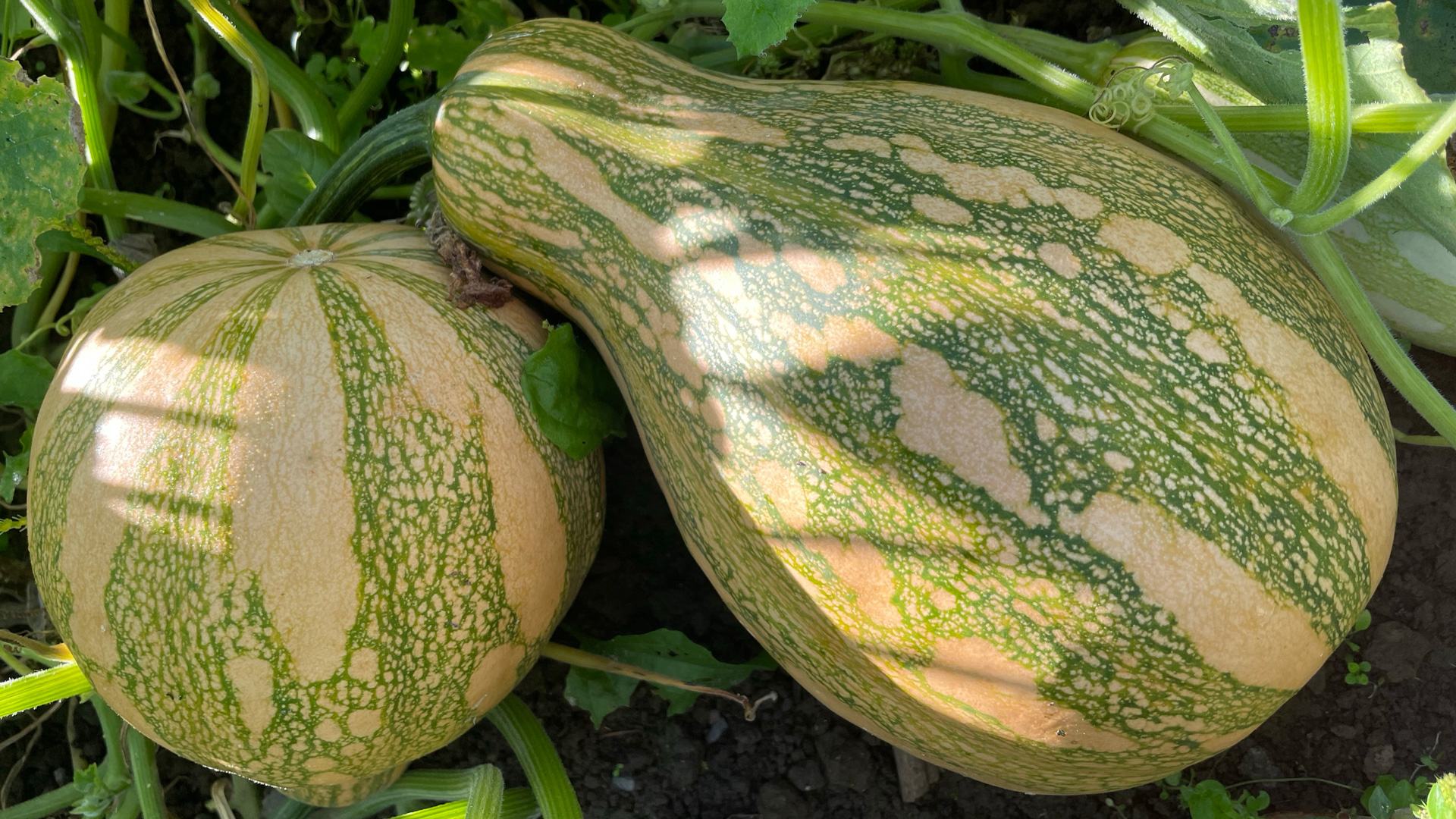
Don’t forget to visit the Farm Stand to take home some of these delicious, versatile winter squash—perfect for roasting, baking, or even adding a decorative touch to your fall celebrations.
2. Harvest the Benefits of Native Rose Hips
As you explore Oxtober, don’t miss the chance to discover the native Nootka rose (Rosa nutkana), whose rose hips are fruiting now. You can find them throughout Oxbow’s property, but a few key places to look are alongside the U-Pick fields and behind the Native Plant Nursery. The plant provides numerous benefits to the environment—from creating essential wildlife habitats to controlling erosion and adding a vibrant pop of pink with its large, aromatic blooms. But did you know these hardy plants have even more to offer? If you can get past their thorns, you’ll find that both the flowers and the fruits of these shrubs are edible!
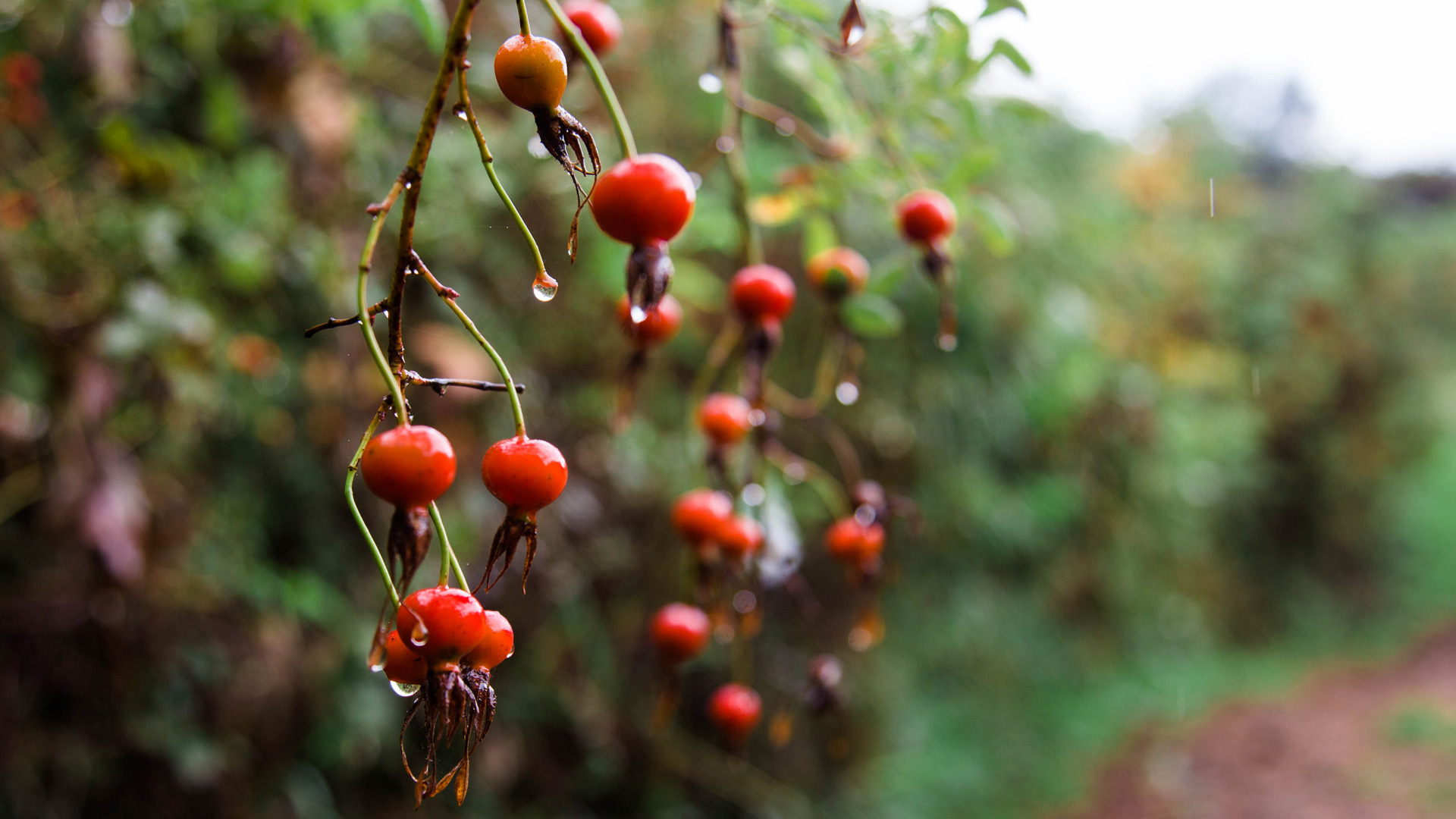
The Nootka rose, a thicket-forming shrub that can reach up to 10 feet in height, blooms from April to June, with slightly larger pink flowers than other rose varieties, borne singly or in clusters of up to three. These beautiful flowers aren’t just for show—they attract pollinators, provide food and cover for birds and small mammals, and make a wonderfully sweet and aromatic tea. After pollination, the flowers transform into bright red, berry-like fruits known as rose hips.
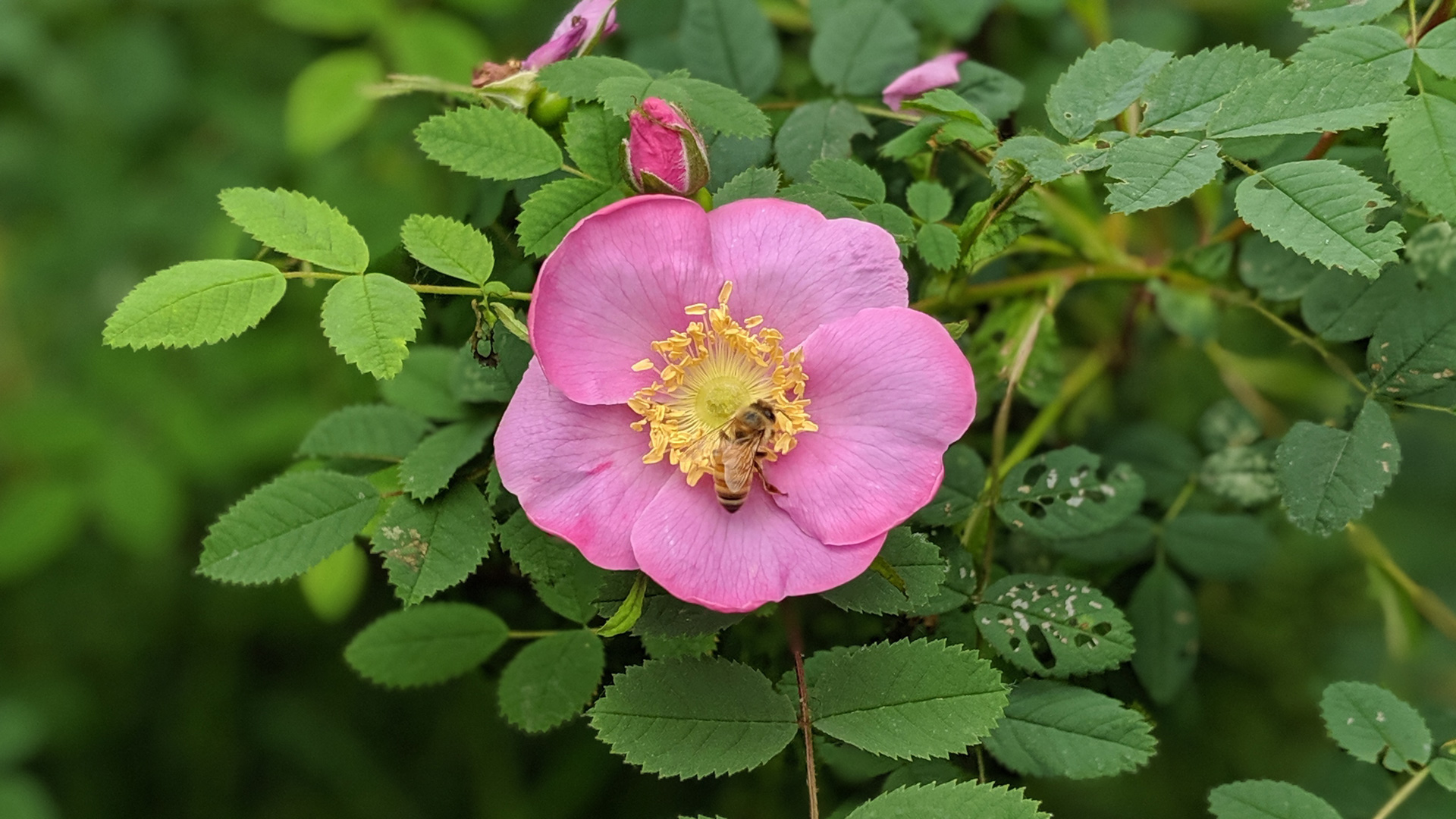
Rose hips are a powerhouse of nutrition, especially high in vitamin C, and have been used historically for both medicinal and cosmetic purposes. From soothing inflammation and relieving arthritis pains to regulating diabetes and promoting skin health, the benefits of rose hips are endless. They are best harvested after the first freeze, around late October or early November. While the hips are quite seedy, the edible rind can be steeped into a tea, infused into oil, or made into a delicious floral jelly.
3. Double the Fun with Two Sling King Apple Slingshots
What’s better than launching an apple across a field with a giant slingshot? Doing it alongside a pal! This year, Oxtober brings twice the tossing with twin slingshots, so you and a friend can send apples flying side by side and see who can hit the bullseye first—less anticipation, more action. Ready, aim, sling!
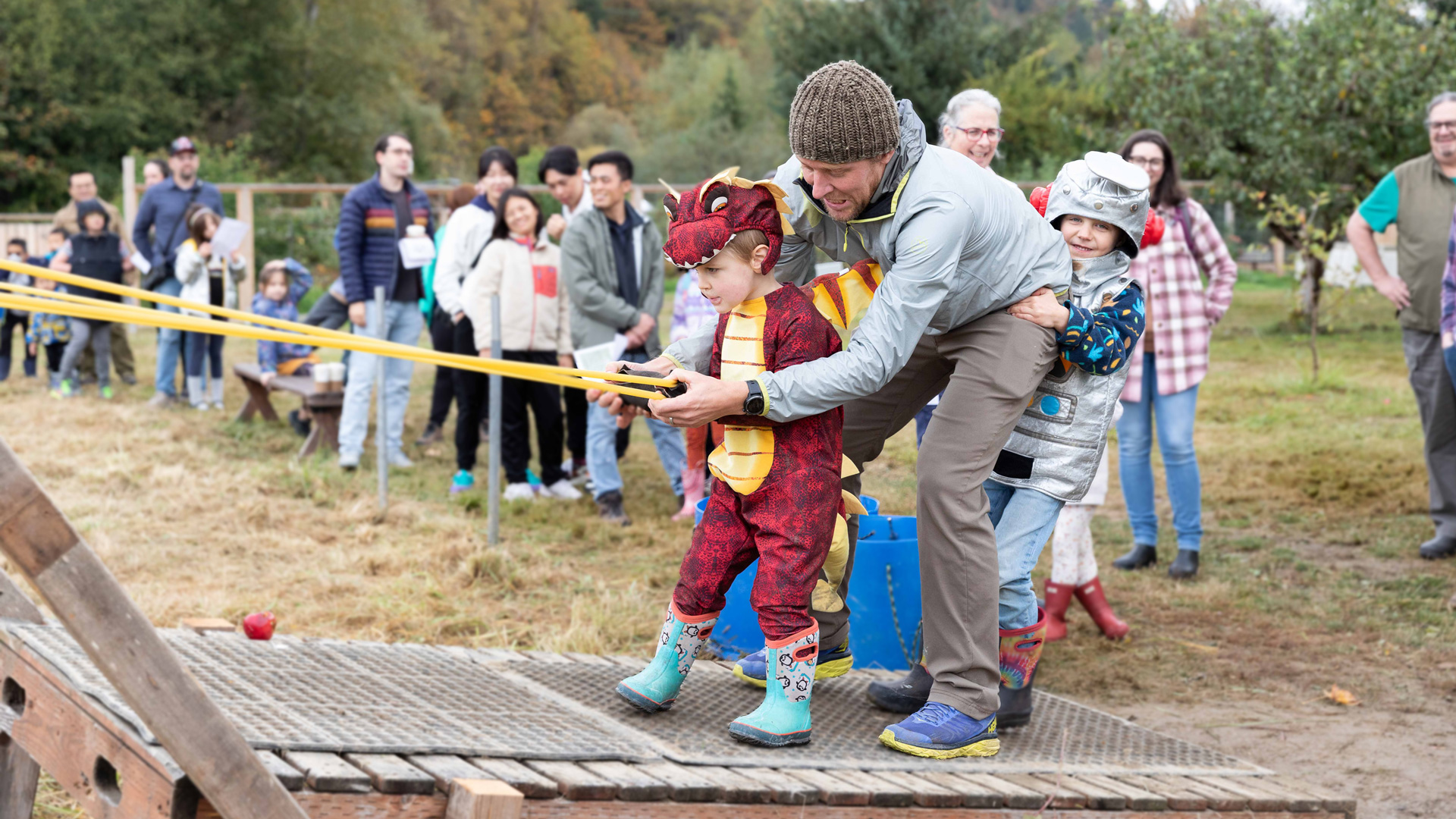
4. Discover the Power of Cover Crops
As you enjoy a tractor hayride around Oxbow’s fields, take a moment to appreciate the green carpets of late-season cover crops establishing this fall. These crops—including a carefully curated mix of cosaque black oats, peas, vetch, and fava beans— are part of ongoing experiments and data collection aimed to provide scientifically sound plant information so farmers can improve soil health and maximize yields. One of the most exciting outcomes of our trials is the success of our recently mowed sunflower cover crops, which have produced more than twice the amount of plant material (biomass) as cereal crops, with a wet weight of 98,000 lbs per acre. This makes sunflowers especially useful for controlling weeds and providing shade, even during dry conditions.
In addition to sunflowers, we are testing a mix of mustard and clover as a biofumigant—a natural way to control harmful bugs, diseases, and weeds in the soil. These experiments are important for finding new ways to protect and improve the land between growing seasons, ensuring long-term soil health. By Oxtober, you’ll see these innovative solutions in action, helping us create a stronger, healthier landscape for the future.
5. Explore the “Potholes” Wetland Restoration Project
While autumn is perfect for celebrating the harvest and enjoying the beauty of the changing seasons, it’s also a time for giving back to the land that sustains us. Fall marks the start of planting season for our Conservation Team across wetlands and riparian zones at Oxbow and beyond. One of the highlights of our restoration efforts is the “potholes” project, an area that has transformed simple grasslands into a thriving wetland ecosystem.
Only 13 years ago, this 1.6 acre low area supported a limited range of plants and animals. Today, it is teeming with life, thanks to collaborative efforts, which involved excavating seasonal ponds and replanting a forested wetland area. Throughout the year, you can hear tree frogs, observe coyotes nurturing their pups, listen to territorial calls from willow flycatchers, and spot Harrier, Cooper’s, and Red-tail Hawks perched in the trees.
Wetlands like our potholes are ecologically important because they are isolated from the river, offering safe habitats for amphibians that struggle to survive in the presence of fish predators. As we enter the rainy season, these wetlands will likely fill with floodwaters, providing an ideal place for Red-legged frogs and long-toed salamanders to lay eggs. Ducks will also begin using the potholes as cover, especially at night.
But wetlands like the Potholes do more than just provide wildlife habitat—they play a vital role in maintaining water quality. Wetlands trap and naturally filter sediment and runoff that would otherwise flow into rivers, mitigating pollution and helping maintain healthy ecosystems. Special bacteria in the wetlands also transform harmful chemicals in the soil into harmless gases, further improving the environmental health for both people and animals. The wetlands hold phosphorus, a nutrient that helps plants grow, keeping it out of our rivers and reducing the risk of algae blooms.
For those inspired to contribute, volunteer opportunities are available throughout the fall and winter. Join us for tree planting, invasive plant removal, and other restoration activities that will make a lasting impact on our local environment. By working together, we can give back to the land that sustains us and help create a more resilient future for our ecosystems.
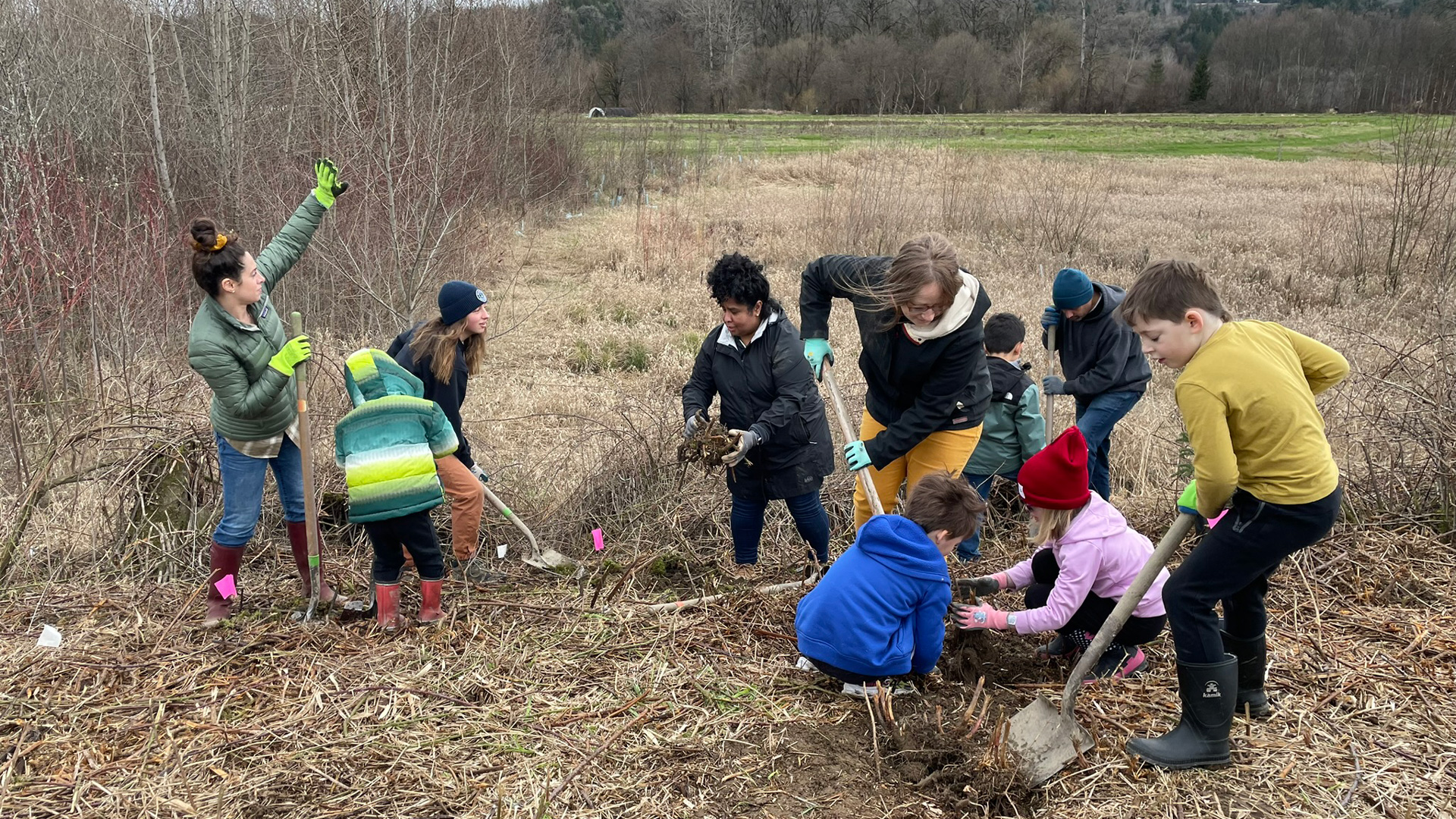
See you at Oxtober!
Join us this October 19 & 20 to fully immerse yourself in the beauty of fall on the farm, where festive fun meets meaningful exploration. As you pick the perfect pumpkin, enjoy live music, and wander through the fields, take a moment to appreciate the changing landscape and connect with the environment around you. We can’t wait to see you there!
